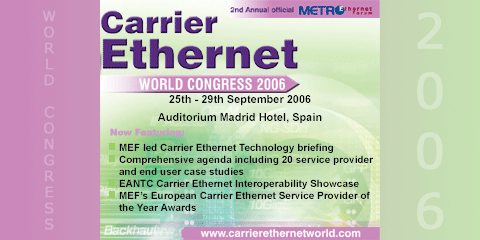|
|

article page | 1 | 2 | 3
• Stranded assets that result in unnecessary capital spending. Networks are over-provisioned both by design and due to poor knowledge of which facilities are actually available in a network. In one study, industry research firm OVUM-RHK estimated that up to $10 billion in network assets in North America alone could be recovered and reused by deploying better software tools for database reconciliation in real-time. This leads to network equipment purchases that would otherwise be unnecessary. RHK further estimated that a typical network inventory database will inaccurately represent installed network resources by 20% to 40%. The problem is one that tends to be exacerbated over time as network operations personnel pressured for time find themselves too busy to record changes in the database. Unbeknownst to network operators, these assets are actually available for use, but the database misleads them into believing otherwise. Service providers are materially impacted, needless to say, as they find themselves buying networking equipment that would otherwise not be necessary, cutting substantially into corporate profits.
|
|
"...an often-made request by service providers is to have the capability to visualize the fault status of a network element contextually..." |
|

• Trouble Resolution and Service Assurance. Unmanaged faults derive from poor topological visibility. Without solid knowledge of the relationships between elements and facilities, it is nearly impossible to understand what alarms affect which elements and services. For example, a system alarm signaling the failure of a network element or group of elements has limited benefit if the network operators cannot pinpoint the elements that need to be addressed or the services that are affected by the network failure. In fact, an often-made request by service providers is to have the capability to visualize the fault status of a network element contextually, i.e., superimposed on the graphical topology display. This is preferable to a simple prioritized, filtered list of alarms and helps expedite troubleshooting.
|
|
|
|
|

• Long provisioning cycles that negatively impact customer satisfaction. Inaccurate data in the inventory management system, producing an inaccurate view of the state of the network, requires the provisioning staff to conduct time-consuming resource verification and database reconciliation with the network database before new services can be provisioned and activated. These operations are time-consuming and labor-intensive, leading to costly lengthening of provisioning cycles and delays in realizing new revenue. More importantly, the provisioning delays often lead to customer annoyance and, by extension, the notorious churn rate in the industry. Service providers who show themselves capable of meeting customer needs expeditiously will enjoy a strong competitive advantage in the years to come.
|
|

• “Garbage in, Garbage Out” – hampering automation with bad data. Northbound software applications, such as Inventory Management and Customer Care applications, provide network operators with actionable information that is only as good as the data fed into the software. The repercussions of using data that is substantively inaccurate can be dramatic. Salient examples include revenue leakage due to billing systems that do not reflect all customer services as well as terminated services not being removed from the network to free up valuable resources.
|
|
|
|




